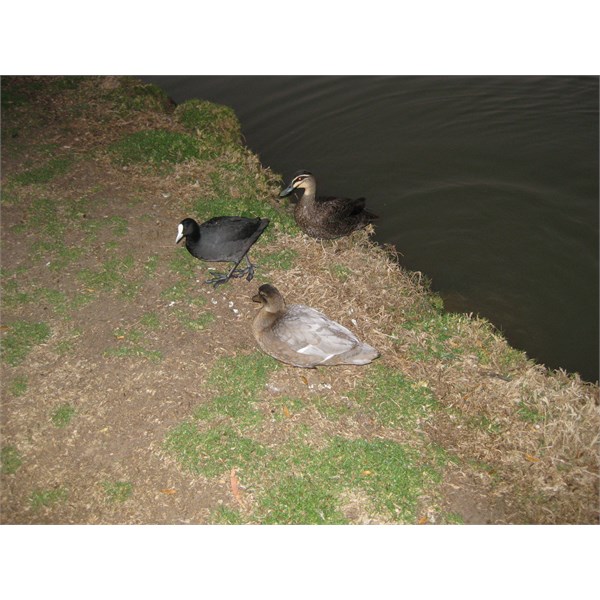Duck ID
Submitted: Thursday, Feb 02, 2017 at 13:25
ThreadID:
134226
Views:
3540
Replies:
5
FollowUps:
4
This Thread has been Archived
Kirks
Can anybody identify this breed of Duck
Thank you

Mystery Duck
Reply By: Member - ROODOO2 - Thursday, Feb 02, 2017 at 14:03
Thursday, Feb 02, 2017 at 14:03
Hi Kirks The pale one middle
pic is a domestic bird dumped as an easy way of getting rid of it.The problem is most similar breeds are based on Northern (hemisphere) Mallard which cross breed with Pacific Black Duck , the one nearest the water , resulting in native ducks loosing their ability to cope with droughts and floods. I suggest if you have a
camp oven the mallard X and
camp oven get together over moderate heat for two hours , you will be doing Australian ducks a big favor.
MIKE
AnswerID:
608195
Follow Up By: The Explorer - Thursday, Feb 02, 2017 at 14:16
Thursday, Feb 02, 2017 at 14:16
Hi
There are establish wild populations of the Northern Mallard (introduced to Australian in the 1860's) - so not all are "domestic" pets that have been dumped. Doesn't make them less of a problem though.
Cheers
Greg
| I sent one final shout after him to stick to the track, to which he replied “All right,” That was the last ever seen of Gibson - E Giles 23 April 1874 Lifetime Member
My Profile My Blog Send Message
Moderator |
FollowupID:
877974